Rose O’Neill, Inventor of Kewpie® Dolls, was Inducted into the 2023 Toy Industry Hall of Fame
by The Bloom Report | 05 Oct 2023
Biographies and Interviews
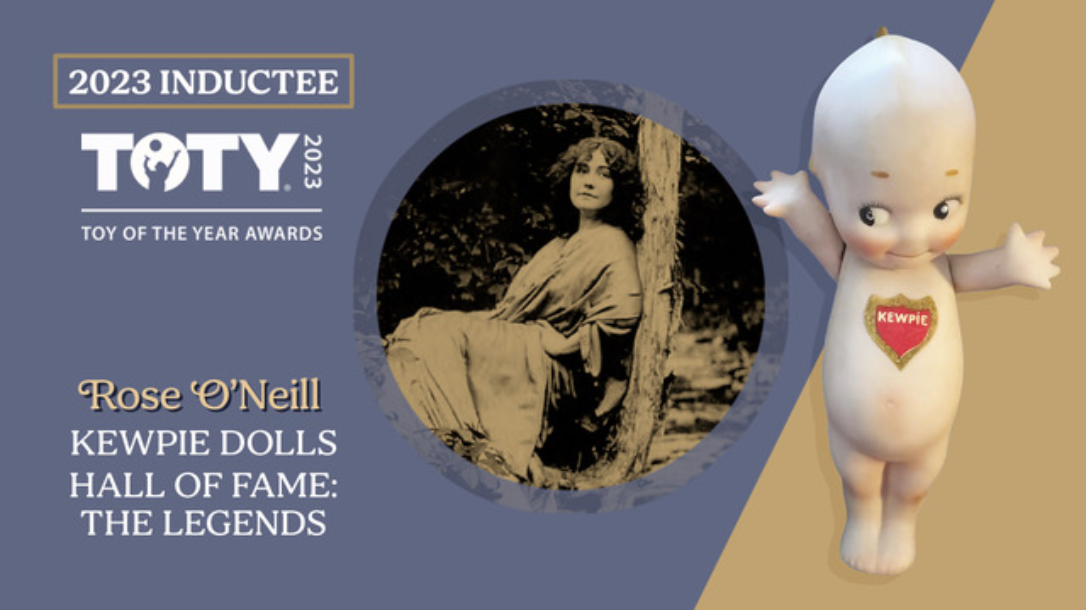
Hello People of Play!
We were thrilled to hear that our client, Rose O’Neill, Inventor of Kewpie® Dolls, was to be inducted into the 2023 Toy Industry Hall of Fame along with other industry legends, including your very own trailblazer, Mary Couzin.
Since Rose O’Neill (1874-1944) is no longer physically with us, nor is James (Jim) Skahill, the amazing steward for all things Kewpie for thirty years, Leslie Levine, Owner of Licensing Works!®, the merchandise agency for the Kewpie® IP, reached out to interview two people closest to gain their perspective.
Susan Scott is the former president of Bonniebrook, Rose O’Neill’s home that has been turned into a museum celebrating her life and work. The Museum is in Walnut Shade, Missouri, a suburb of Branson. Scott has been a volunteer at Bonniebrook for more than 20 years. She's been instrumental in getting O'Neill into the spotlight, working tirelessly to have Rose inducted into the National Women’s Hall of Fame in 2019 and played a role in lobbying for Rose’s recognition for both the Eisner award at last year’s San Diego Comic-Con and this most recent Toy Hall of Fame honor. All wonderful tributes, long overdue!
Tom Skahill is the son of Jim Skahill and worked alongside his father at Jesco Imports, literally growing up surrounded by Kewpie dolls. Jesco Imports involvement with Kewpie began in 1982. Briefly, when Rose O’Neill died in 1944 she assigned all Kewpie merchandising rights to Joseph Kallus. Kallus was a life-long business associate and the person Rose asked to sculpt the models for the very first bisque and the celluloid Kewpie dolls that were made in Germany in 1913. Kallus started the Cameo Doll Company in 1925 until he retired in 1969, at which point he licensed Strombecker and later Milton-Bradley Co to manufacture Kewpie dolls. In 1982, Kallus met with the then President of Jesco imports and Kallus agreed to assign all the rights to Kewpie as well as his other Cameo designs. Kallus died shortly thereafter and his daughter, Rita Abraham passed down the original Kewpie and Cameo molds to Jesco Imports.
Jim and Tom Skahill sold the Kewpie® intellectual property to the Kewpie Corporation, headquartered in Japan, in December of 2012. The Kewpie Corporation has been using the Kewpie character as their corporate icon since the 1920’s so when it came time to sell the Kewpie intellectual property rights, Kewpie Corporation became the logical choice. Kewpie Corporation continues the legacy of Rose O’Neill and is the Licensor to all rights involving use of the Kewpie® Brand.
Licensing Works!® has had the privilege to work with both the Skahills/Jesco and Kewpie Corporation to help spread Kewpie joy to new generations.
Levine: We asked Tom what he thought his Dad would have said had he been alive to hear that Rose O’Neill was being inducted into the Toy Hall of Fame.
Skahill: He would be ecstatic that the “pioneer” he came to know thru decades of association with Kewpie is being honored by his chosen peers. And quite possibly may have even shed a tear of joy!
Levine: Tom, you literally grew up with the Kewpies, it must have been a very interesting childhood, surrounded by all those Gumby figures and Kewpie dolls. We know that you are an avid race car driver and lover of all things outdoors. Can you share with us some of your earliest memories about Kewpie?
Skahill: My earliest memories would be visiting my father’s showroom (Dad was a sales rep) in downtown Los Angeles back in the mid 60’s and being surrounded with dolls (Kewpies and others) and toys of all shapes and sizes, but all those toys were girl’s toys!! By the time I was 9 or10, I remember spending time with Dad at the Biltmore Hotel downtown LA wiping down glass shelves and setting displays for Kewpie dolls at the formation of the WTHRA (Western Toy and Hobby Representatives Association) trade shows. Then later, I have memories of when Jesco took control of the IP, and we reintroduced Kewpie out of our tiny little showroom at New York Toy Fair. We had the buyers lined up down the hall to write orders as fast as our pens could scribble, what a thrill for a toy person…but soon after Toy Fair the madness set in with the realization of “How do we get all of these dolls made and shipped?” Through long nights and some creative sourcing we got it done. We had all of Joe Kallus’s original 40-year-old molds (we wanted to maintain the integrity of the original Kewpie). That made it tricky to locate rotational molders that were still using 40-year-old roto machines/ovens for the molds to fit on! The challenges and the thrills were consistent right up to the sale of the IP.
Let me introduce Susan Scott to the conversation. She knows of so many wonderful things about Rose O’Neill. She wrote the biography that we feature on the “About Rose O’Neill” section of the Kewpie Licensing site which can be found here in full, https://kewpielicensing.com/about-rose-oneill.html. Susan wrote this bio for the National Women’s Hall of Fame Induction in 2019.
Levine: What did you think when you first heard that Rose O’Neill was an inductee in the Toy Hall of Fame?
Scott: I was just ecstatic. We are all so happy that Rose received this recognition.
Levine: One of my favorite quotes about the Kewpie brand came from Rolling Stone Magazine of all places. They said that “a century later, Kewpies continue to epitomize the maximum exaggeration of cuteness…” and that is exactly what we believe…that Kewpies have been defining over-the-top ‘cuteness’ for over 114 years. Susan, what are some of your favorite Rose O’Neill quotes?
Scott: One of my favorites is “I have a thrilling hope that women are going to do something glorious in the arts. It is my passionate conviction. I am always indignant when women are denied creative power in art.”
Levine: Susan, can you tell us about some of your work to get Rose O'Neill the recognition she deserved?
Scott: Well, you heard the old saying ‘try, try, try until you succeed’… the Bonniebrook Historical Society nominated O'Neill at least twice over a three-year period before she was selected. We were thrilled to see Rose get this wonderful honor which has been a catalyst for all the recognition since 2019 including this amazing induction into the Toy Hall of Fame.
Levine: Susan can you tell how us you became involved with Bonniebrook?
Scott: As a volunteer at Bonniebrook, I fell in love with her artwork. I connected with Rose O'Neill because I admired her compassion and generosity as much as her amazing talent as an artist.
You know, Rose O‘Neill’s success as an artist, writer, and cartoonist allowed her to develop a very lavish lifestyle, placing her in the center of the New York art world. She made around $1.5 million from her Kewpie creations, making her the highest-paid and wealthiest cartoonist of her time. That translates to around $40 million today.
Levine: That’s a lot of money for someone that grew up without much. Can you tell us a little bit about Rose O’Neill’s work life before she created the Kewpie characters and how her poverty as a young child influenced her later in life?
Scott: O'Neill moved to New York City at the young age of 19 and before long was illustrating for publications like Ladies' Home Journal, the women's magazine which first featured O'Neill's Kewpie drawings in 1909. O'Neill copyrighted and patented Kewpie and began to sell the rights for commercial use. Kewpies were beautifully illustrated enjoying ice cream cones in all sorts of situations and featured in magazine ads for Jell-O.
Rose later traveled to Germany to seek out doll production with Kestner & Co. When Rose was asked for parameters by the German artists she told them, “…I'm just asking that the tiniest Kewpies will be the best.” They did not think that made economic sense as those would cost the least and Rose was quoted as saying, “... We need to price it so poor children can afford them, and we need them to be really good.”
O’Neill had an incredible sense of empathy having grown up very poor. She wanted Kewpie dolls to be affordable and attainable for all children.
-----------------------
Fun Facts about Rose O’Neill:
- O’Neill was only sixteen years old when her first published illustration appeared in Chicago Graphic in July 1890.
- O’Neill is recognized as “America’s First Female Cartoonist” with her cartoon strip “The Old Subscriber Calls,” Truth Magazine, September 19, 1896.
- In 1897, O’Neill was hired by Puck Magazine as the first woman cartoonist on its all-male staff and she remained the only woman staffer for six more years. Hundreds of her illustrations for Puck depicted women and minorities in strong leadership and intellectual roles.
- O’Neill’s cartoons, illustrations, short stories, and poems were purchased by over fifty national magazine publishing companies starting in the early 1890’s and continuing until the late 1930’s. O’Neill’s illustrations appeared on sixty covers of national magazines.
- From 1905-1933, O’Neill’s art was used for product advertising for various companies including Edison Phonograph, Rock Island Railroad, Proctor & Gamble, Colgate Palmolive, and Genesee Pure Food Company.
- From 1904-1930, O’Neill wrote and illustrated four novels and eight children’s books that were published from 1910-1936. In 1922, O’Neill‘s one hundred-fifty illustrated poems were published in her book, The Master Mistress.
- O’Neill’s illustrations appeared in over forty books along with many short stories, written by other authors, from 1898-1940. Some of those were well-known and requested Rose to be the illustrator.
- Rose O’Neill created the Kewpie character that appeared in her illustrated stories published by Good Housekeeping, Ladies Home Journal, Delineator, and Woman’s Home Companion during the years 1909-1928. This character was “a good-will ambassador” spreading love, laughter, and philanthropy.
- O’Neill Kewpie comics appeared in full page Sunday newspapers across the United States from 1917-1930’s. Her single cell cartoons, Kewpie Korner (1917-1918), appeared in U.S. newspapers. These cartoons dealt with the subjects of suffrage, war bonds, supporting soldiers, and discrimination.
- In 1893, O’Neill’s mother, father, and siblings moved to the remote Missouri Ozarks. Rose visited in 1894 and named the homestead, Bonniebrook. Bonniebrook was the family home. With money from the sale of her art, she built a 14-room mansion at Bonniebrook that was completed in 1909. She always stated, “Bonniebrook is my favorite place on earth. Here I have done my best work.”
- From 1914-1918, O’Neill was well known as a “suffrage artist” during the suffrage campaigns in the United States. Her art was used for suffrage posters, flyers, and postcards that were circulated throughout the US.
- The Actors Fund of America utilized O’Neill’s art on the front cover of their programs for the fundraising events during the years from 1910-1924.
- O’Neill’s involvement in the “1911 New York Child Welfare Exhibit” comes as no surprise since her art regularly focused on the plight of children in the streets along with those struggling in poverty. Her participation included donations of illustrations for a visual exhibit in the Law and Administration section of this exhibit. The purpose of the exhibit was described, “Let us try to arrange matters so that no child in New York shall miss his rightful chance to grow up through happy, well-balanced childhood into the useful, interesting work of adult life.”
- “The Kewpies Health Book” published in 1929 was used by many schools across the U.S. in a national information program about tuberculosis. Large posters from the O’Neill illustrations in this booklet were also distributed by the Atlantic Visiting Nurse and Tuberculosis Assn.
- O’Neill used the world-wide known Kewpie character to deliver serious messages concerning war, suffrage, discrimination, women’s rights, and the downtrodden. Author Shelley Armitage once described Kewpies, “The Kewpies are free-thinking intellectuals who analyze and evaluate the impact of American culture on the rich and poor, native born and immigrant, adult and child. Unrestricted by clothing and other symbols of the culture they criticize, they denounce social conventions responsible for widespread misery.”
- The San Francisco Chronicle, November 25, 1917 article promoted the beginning of the Kewpie Korners in the newspaper, “Rose O’Neill is the highest-paid woman artist in the world. This is not so much because of the obvious perfections of her art, as because of the great, clear human note she strikes what time she puts her pen to paper. Just to look at a Kewpie is to smile. To read a Kewpie verse is to play sunshine upon a dark spot. They radiate happiness…”
- The Kewpies created a worldwide sensation. It is said to be the first such phenomenon that began from magazine stories and verse. Factories in Germany were the first to make an unending list of products that were decorated with O’Neill’s Kewpie art.
- O’Neill is believed to be among the first American women to be elected a member of the prestigious Société des Beaux-Arts and thus was invited to exhibit her art in Paris Salons as early as 1906 and 1912.
- Rose became the first woman elected as a Fellow of the New York Society of Illustrators in 1916. Prior to that date, four women had been named “Associates.”
- In 1967, the International Rose O’Neill Club was founded to preserve and perpetuate the memory and works of O’Neill, to promote the cultural arts, and to hold an annual celebration in Branson, Missouri. The Club continues to provide scholarships to aid needy talented students in the arts.
- 1974 The U.S. Post Office honored the 100th anniversary of the birth of O’Neill with a 1974 First Day cover.
- In 1975, Bonniebrook Historical Society, Inc. (BHS), a 501(c) (3) non-profit organization, was organized to collect, preserve, and make available for educational and historical purposes artifacts, documents, personal items, and any works or items directly relating to the history and life of Rose O’Neill. BHS maintains the Bonniebrook Homestead property that includes the O’Neill cemetery. The BHS tour home, museum, fine art gallery, gift shop and research library are staffed with volunteers.
- In 1985, the Society of Illustrators Museum of American Illustration, located in New York, hosted the exposition America’s Great Women Illustrators 1850-1950 which included six pieces of O’Neill art.
- In 1997, O’Neill was included in the U.S. Post Office in the “Classic American Dolls” set of stamps.
- The Society of Illustrators Hall of Fame in New York City inducted O’Neill in 1999.
- O’Neill was honored by the United States Post Office American Illustrators Series of 2001 stamps.
Thank You,
Leslie Levine
Licensing Works!®
Recent Blogs
Recent Blogs
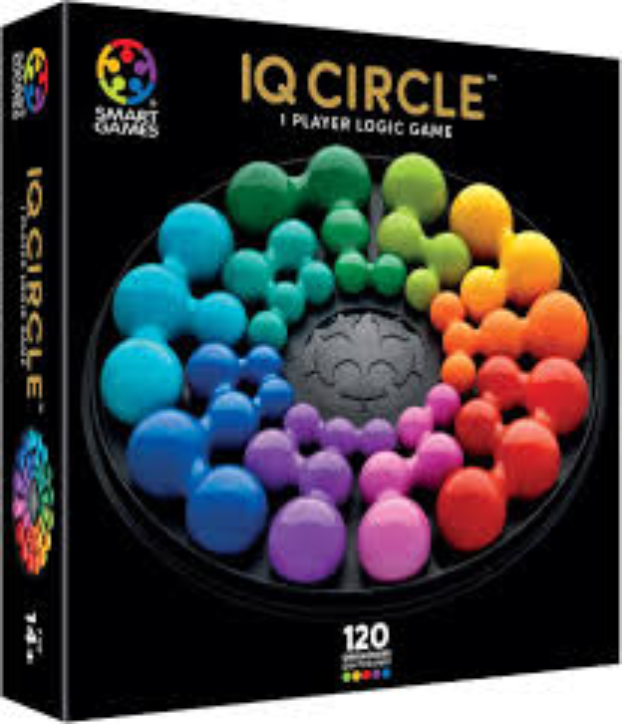
Reviews
Game Review: IQ Circle

Biographies and Interviews
Catching up with Eric Olsen, The Inventor of Flip 7 and Co-Creator of Messy Table Games
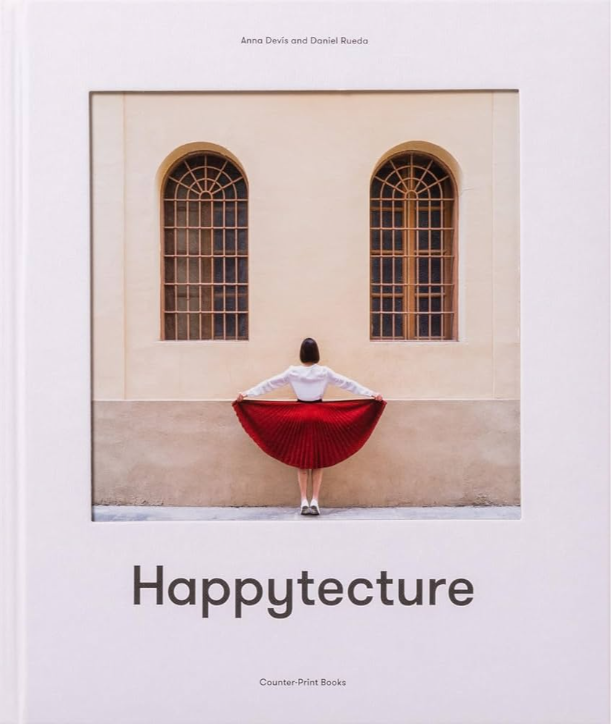
Reviews
Book Review: Happytecture by Anna Devís & Daniel Rueda

Biographies and Interviews
From Stage Lights to Game Nights: McMiller’s David & Julian on Shark Tank (Dec 10th), Viral Success & Building a Business With Your Husband
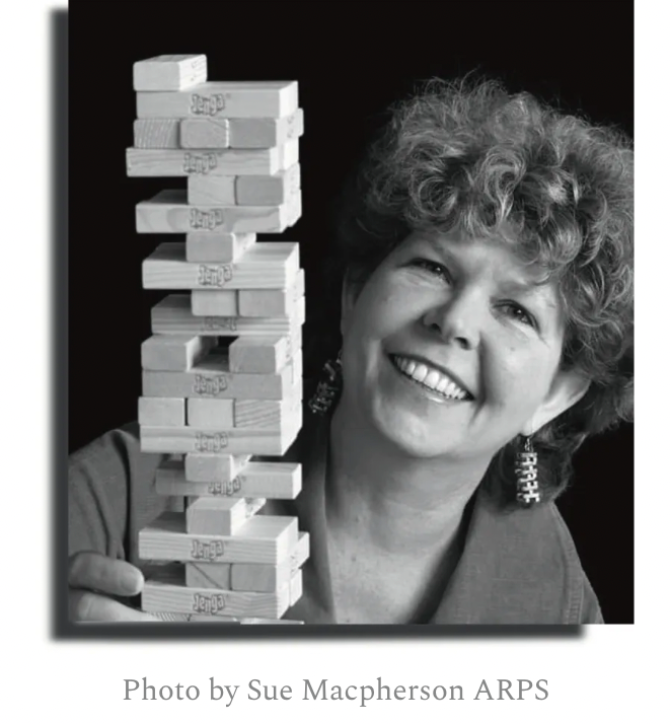
Press Release
Leslie Scott (creator of Jenga) announces the launch of BOUNDLESS PLAY
See more
Recent Wiki

BOOK REVIEWS
Toy Review: Monster Jam Smash & Bash Grave Digger Monster Truck

BOOK REVIEWS
Toy Review: Marshall's Rapid Rescue Fire Truck

COMPANIES
Zigazoo Secures Partnership with YouTube Star Like Nastya to Inspire Millions of Kids
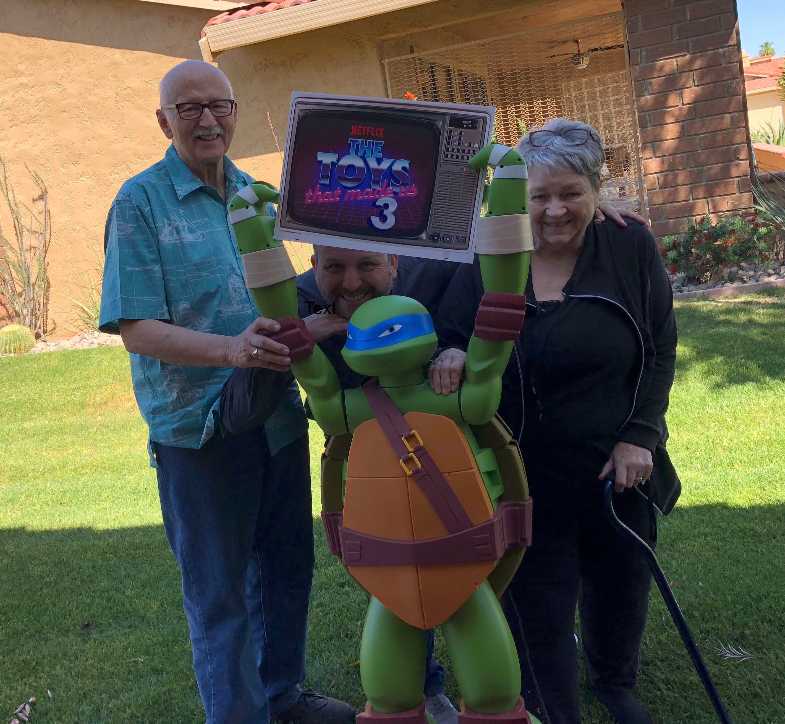
PEOPLE
A Legacy of Play: Inside the Carlson Family’s Multi-Generational Journey Through the Toy Industry

COMPANIES
Radio Flyer Studios Announces the Launch of its First Original Animated Series, Max & Maple: The Can-Do Kids
See more
POP's Got Talent

POP Entertainment
Randy Klimpert Shares his Ukulele Collection

POP Entertainment
Steve Casino Peanut Art

POP Entertainment
Everyone's Talking about POP!

POP Entertainment
Princess Etch - a Multi-Talented Etch A Sketch Artist

POP Entertainment
Joseph Herscher of Joseph' s Machines.
See more
Recent POPcast

Hidden Role: The Brains Behind your Favorite Games
Connie Vogelmann designed Apiary & Wyrmspan!

Hidden Role: The Brains Behind your Favorite Games
Bob Fuhrer... Is THE Crocodile Dentist!

Hidden Role: The Brains Behind your Favorite Games
Tom Dusenberry... Bought Atari, Wizards of the Coast, and Avalon Hill!

Hidden Role: The Brains Behind your Favorite Games
Matt Leacock created Pandemic... the game!

Hidden Role: The Brains Behind your Favorite Games
Scott Brown and Tim Swindle... are Launching a New Sport!
See more
POPDuos

POPDuos: Interviews with Legends and Leaders
POPDuo: Richard Dickson, Mattel’s President & COO, and Kedar Narayan, Young Inventor Challenge AMB

POPDuos: Interviews with Legends and Leaders
POPDuo: Will Shortz and Josh Wardle

POPDuos: Legends and Leaders Explore Creativity
POP Duo: Elan Lee, Co-Founder, Exploding Kittens.and Jeff Probst, Host and Exec Producer, Survivor

POPDuos: Legends and Leaders Explore Creativity
POP Duo: David Fuhrer, MNG Director, Blue Sq Innovations & Shawn Green, past Dodgers & Mets MLB Star

POPDuos: Legends and Leaders Explore Creativity
POP Duo: Bob Fuhrer, Founder, Nextoy and Tom Fazio, Golf Course Designer
See more















